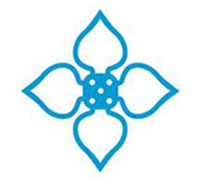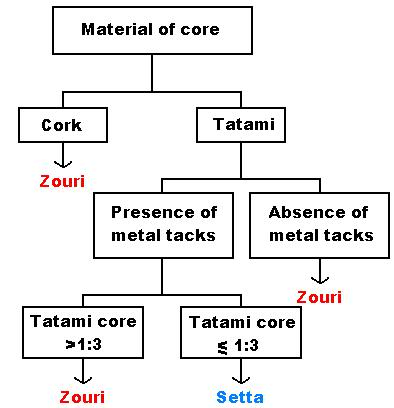Kimono Terminology and Kimono Glossary
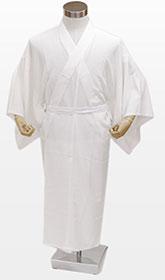
Juban - 襦袢
Juban is a type of underwear which you wear under your kimono, but is very important because it forms the fundamental part of your kimono. For formal kimonos, it is a custom to wear white juban, but other than that there is no particular rules.
Juban’s original role is to prevent the kimono from getting dirty by sweat, etc. Therefore, the size of juban is required to be nearly the same as the kimono, and does not show from the hem of the kimono. If you are wearing ready-made kimonos which are made by standard sizes, or kimonos made to fit your size, then you can reuse one juban for those kimonos.
However, if you’re wearing given kimonos or recycled kimonos, then you have to choose a juban that matches the sleeve width or sleeve length of the kimono you want to wear. To resolve this problem, juban which sleeves are easily detachable are commonly seen recently.
Juban’s another role is to fix and maintain the shape of the collar. For that purpose, you attach haneri, and put in the erishin. As for the material of juban, silk was common in the past, but nowadays for common types, cotton is used for the corsage, and polyester is used for the collar and the sleeves to make it easier to wash.
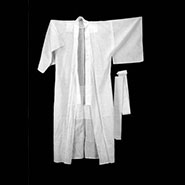
HadaJuban - 肌襦袢
The first layer of kimono underwear, usually comprising waist length kimono top (hanjuban) like an undershirt, and a susoyoke (wrap underskirt) or a plain V-neck shaped t-shirt and (long) underwear.
* Hadajuban often has narrow sleeves rather than kimono-style sleeves.
* In the case of the image on the left, the Hada-Juban is a one piece version.

HanJuban - 半襦袢
Half size under kimono , usually worn together with a susoyoke (lower part) in place of a naga-juban. A t-shirt with V-shaped neck can also be a substitute for a Han-Juban.

Susoyoke - 裾除け
A wrap-around half slip, from a single piece of cloth with ties at the waist. The Sosuyoke is a (long) traditional kimono underwear to be used in combination with han-juban.
Please remember that susoyoke comes in a variety of materials like cotton, lace, polyster or Double weave gauze. For some reason the latter sounds more comfortable.
The length is standard 90cm though there is a 95cm availabe this also doubles the price. The width for M size is 132 cm and L size 150cm.
For the real traditionalists a fundoshi can be chosen instead of a Susoyoke.

Suteteko - ステテコ
Thin, breathable and moisture absorbable knee-length underwear for the summer to be used in combination with han-juban. You could say, the Long Johns of Japan. In the Meiji era (from 1868 to 1912), Suteteko became popular as underwear for the Kimono. Material used is cotton or plain weave.
Due to the shortage of electricity this underwear is gaining popularity again as a cool alternative for the aircon. To attract the younger generations, fashionable Suteteko have been made in different patterns and colours. Sutetoko are even available now for women.
Left the traditional white version, right the new version that also can be worn as outerware.

Fundoshi - 褌
Very traditional Japanese undergarment for adult males, made from a length of cotton. Before World War II, the fundoshi was the main form of underwear for Japanese adult males. However it fell out of use quickly after the war with the introduction of new underwear to the Japanese market, such as briefs and trunks. Nowadays, the fundoshi is mainly used not as underwear but as festival (matsuri) clothing.
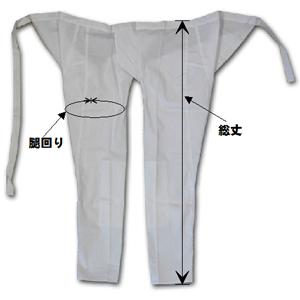
Momohiki - 股引
Momohiki is the trouser type underwear for men also called 'patch'.
first number (left) is tigh width (腿周り), second number (right) is leg width (総丈)
size child : 13-14 years (45cm/82cm), 15-16 years (47cm/91cm)
size adult : S (49cm/92cm), M (52cm/95cm), L (55cm/101cm), LL (60cm/108cm), 3L (66cm/118cm)
cotton: 100%

Naga-juban - 長襦袢
Naga meaning 'long' and juban meaning 'underwear', the Naga-juban is a long undergarment for Kimono. It is worn over the "Hada-juban" and underneath the "Kimono". The Purpose of wearing Nagajuban is to keep the kimono from getting worn or stained. Only the tip of the Naga-Juban could be seen between your neck and the kimono, but it can create a subtle balance of the entire outfit you are in. It can be made of silk or sometimes made of polyester microfiber. It's not necessarily a bad thing to have a synthetic version as this is more washable.
Underwear in summary :
| 長着 Nagagi Kimono |
+長襦袢 Naga-juban Long under-kimono |
+肌襦袢 Hada-juban Undershirt |
|
| +U首シャツ等 U Kubi shatsu nado V-Shaped T-shirt |
|||
| +半襦袢 Han-Juban Half under-kimono |
+裾除け susoyoke underskirt (half-slip) |
+肌襦袢 Hada-juban Undershirt |
|
| +U首シャツ等 U Kubi shatsu nado V-Shaped T-shirt |
|||
| (何も付けない) Nani mo tsukenai Do not wear anything |
|||
| +ステテコ Suteteko long underwear pants |
+肌襦袢 Hada-juban Undershirt |
||
| +U首シャツ等 U Kubi shatsu nado V-Shaped T-shirt |
|||
| (何も付けない) Nani mo tsukenai Do not wear anything |

Haori Himo - 羽織紐
Ties for haori jackets
Haori jackets feature a braided clasp which allows the jacket, worn over the kimono to formalize the ensemble, not only to secure it close to the body but to allow part of the kimono to remain visible. Haori himo are detachable from the jacket.
There are different versions of the Haori Himo, take a look at the Musubi - Haori Himo section.
A more complete story can be found here.

Koshi-himo - 腰紐
Koshi = waist. Himo=rope.
Koshi-himo is a long thin cloth tied around the waist to hold the "Juban" (under kimono) and "Kimono". For women it also is used to adjust the kimono length. If you wear a Naga-juban, you will need 2 Koshi-himo to keep the collar from shifting when putting on the main kimono. If you wear a Han-juban, you only will need 1 Koshi-himo. The Koshi-himo is hidden from view after tying the obi.

Eridome - 襟止め
Eri = collar. Tome(ru) = to stop
A metal S-shaped collar clips to hold the upper eri in place on both naga-juban and kimono.
A great way to prevent the gap at your neck to widen while wearing a kimono.

Tabi - 足袋
Split toed socks
Tabi are traditional Japanese socks. Ankle-high and with a separation between the big toe and other toes, they are worn by both men and women with zori, geta, and other traditional thonged footwear. Tabi are also essential with traditional clothing—kimono and other wafuku as well as being worn by samurai in the feudal era. The most common color is white, and white tabi are worn in formal situations such as at tea ceremonies. Men sometimes wear blue or black tabi for traveling. Patterned and colored tabi are also available and are worn most often by women, though they are gaining popularity among men as well.
In contrast to socks that, when pulled on, fit the foot snugly because of their elastic weave, tabi are sewn from cloth cut to form. They are open at the back so they can be slipped on and have a row of fasteners along the opening so they can be closed.
Choose the right size with this conversion table.

Kohaze - 小鉤 / こはぜ
Tabi Shoes have metal clasps at the back called kohaze. Usually kohaze are attached to the inside of Tabi Shoes and fasten and adjust around the ankles by hooking into a looped thread. Generally there are a few string loops on Tabi Shoes. Choose the best ones to fit Tabi Shoes onto your foot and hook kohaze adjusting around the ankle or calf. Leaving a few kohaze open reveals some of the inside fabric, allowing the wearer to enjoy different designs and styles.
The tabi that you wear with a kimono have 4 or 5 clasps. 4 is the casual, comfortable while sitting seiza version, the 5 kohaze fit tightly around the ankle and are usually used with dance performances, festivals, kabuki and the tea ceremony.
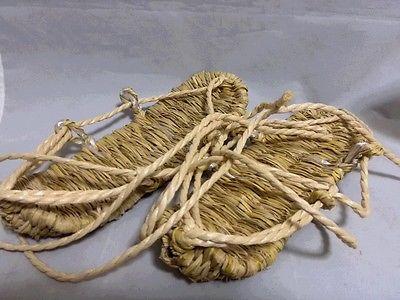
Waraji - わらじ / 草鞋
Waraji are traditional rice straw rope sandals, the most common type of foot wear in the Edo era. Waraji were also worn by the samurai class and foot soldiers during the feudal era of Japan.
Wearing waraji is known to be very beneficial for the health of your feet because of the way they help the arch of the foot to form, or shape, properly. This is why waraji-wearing Japanese have very few problems with flat feet. In addition, waraji wearing makes your legs and feet stronger because of the way you must use your muscles when walking.
They are now used for training in martial arts, for rehabilitation training, for training in mountain climbing, costume play, festival and are used often for teaching in school.

Geta - 下駄
Geta are platform sandals that keep your kimono from dragging on the ground. They also keep your feet high and dry above the snow and rain. There are 3 major version of the geta with many variations based on these simple design, a balancing act with a single tooth, also called a tengu-geta, a more comfortable 2 tooth version (see image) and an easy to walk on modern version with no visible tooth.
Geta aren't particularly formal. They're commonly worn with yukata with bare feet, tough you will notice when a shrine maiden walks on a geta she wears tabi socks. You'll see many people in geta at summer matsuri and fireworks. Paulownia wood is popular for geta.
Tetsu geta are iron geta that weigh 3 to 5 kilograms. They were historically used by students of martial arts such as karate to strengthen the legs. When you go to temples you often can see these iron geta that where worn by the monks to feel the weight for yourself.
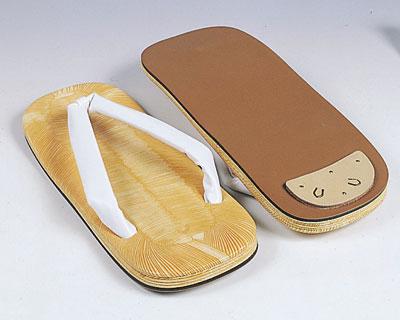
Zōri - 草履
-Made of leather, vinyl or fabric nowadays; used to be made of straw in the past as represented by the 'grass' kanji (草, zou) in the Japanese name.
-Consists of surface, sole, and core (芯, shin).
-Core is made of cork.
Furthermore, there are those with tatami surface and cork core. The presence of cork core indicate it is a zouri, not a setta, regardless of the core's thickness, tatami surface and gender.

Setta - 雪駄
-Made of bamboo peel (竹の皮) or palm leaves (棕櫚の葉) woven into tatami.
-Consists of surface, sole and core (like zouri)
-BUT core is made of woven tatami or leather.
-Also, metal tacks are nailed to the heel part of the sole



Now, to pick the right shoe size, or at least, come close to it (sometimes i have this size and the next brand is one size larger or smaller), here is an comparison chart from Western and Japanese shoe sizes
When dubbing between two sizes it is adviced to pick the one bigger (+0.5cm in the Japanese row).

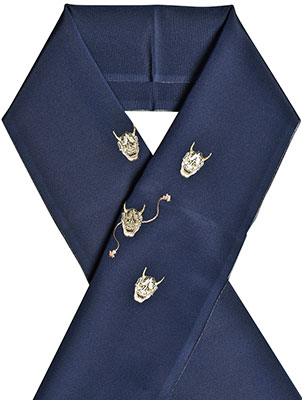
Han-eri - 半襟
"Han" means "half", and "Eri" means "neckband".
A loosely stitched, removable collar, worn on a juban kimono. Removed for washing, so the juban need not be washed so often.
It is around 15cm in width, and 110-120cm in length.
There are various kind of Han-eri.
* White, plain, smooth : Most formal.
* White, embroidered : Feeling formal and gorgeous.
* Colored, embroidered : Gorgeous, can use as formal.
* Chirimen (crapy cloth) : A little casual.
* Patterned by dyeing : Casual.
* Decorated with beadwork : Fashionable, can use as formal.

Date-eri - 伊達衿
Also known as "Eri Sugata", "Kasane-eri" or "Hiyoku-eri". An extra collar layer, stitched onto the inside of a kimono collar, with only its edge showing. Particularly in summer, layers of kimono can be very hot; as the edge of the collar of the naga-juban kimono can be seen at the edge of the outer kimono's collar; a date-eri stitched to the collar of the outer kimono gives the impression of a naga-juban beneath, allowing the wearer to omit the naga-juban, in order to stay cooler.
It is 5-6cm in width, and 120-130cm in length.

Date-jime - 伊達締め
A small, thin fabric belt worn over the kimono and under the obi in order to protect the fabric and stablize the area. Date-jime is the second belt to tie around the waist over Koshi Himo first belt (before Obi belt) to hold Nagajuban and Kimono in place. If the datejime has a velcro closer, it is also celled magic belt.
Personally i haven't used this belt because my kimono and nagajuban have the correct sizes.
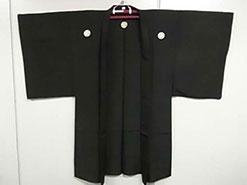
Haori - 羽織
Haori is a jacket for Kimono. There are short length Haori and Long length Haori.
An Haori has the same shape as the kimono but about half the length, worn on top of the longer kimono.
Haori kimono jackets do not overlap at the front like other kimono, they lie slightly open and hold in place by a haori-himo.
Almost any man's kimono can be made more formal by adding a haori or hakama but the most formal is the black with the 5 kamon (crests, also called mon) black montuki kimono being the most formal of all.
Originally worn by men only; women were allowed to wear them after the Meiji era and women's ones became all the rage in Taisho era (1912-1926).

Kimono / Nagaki - 着物 / 永き
The word "kimono" actually means a "thing to wear" (ki "wear" and mono "thing") and nagaki means a full (ankle) length kimono, worn as underwear beneath a furisode kimono though commonly called a Kimono nowadays.
The earliest kimonos were heavily influenced by traditional Han Chinese clothing, known today as hanfu (漢服,kanfuku in Japanese), through Japanese embassies to China which resulted in extensive Chinese culture adoptions by Japan, as early as the 5th century AD.
The main distinctions between modern men's kimono are in the fabric and the design. Most men's kimono are of subdued, dark color; common colors are black, dark blues and greens, and occasionally brown. Fabrics are usually matte. Some have a subtle pattern, and textured fabrics are common in more casual kimono. More casual men's kimono may be of slightly brighter color, such as lighter purples, greens and blues, but sumo wrestlers have occasionally been known to wear quite bright colors such as fuchsia.
The most formal style of men's kimono is plain black with five kamon on the chest, shoulders and back. Slightly less formal is the three-kamon kimono. These are usually paired with white undergarments and accessories.
Almost any kimono outfit can be made more formal by wearing an hakama and haori
Some tips to help to identify a kimono
* Kimono can be made from various silk fabrics, wool, linen, and even polyester. Never will they be made from Chinese brocade or satin.
* The basic shape of the dress is like the letter "T"; the shape doesn't vary. What changes the way it looks is the fabric, sleeve length and most of all, the wearer's personality.
* Fake kimono often don't have a seam going down the back.
* If an obi (sash) and a kimono are made from the same fabric pattern it is probably a kimono shaped bathrobe
Types of Kimono
- Kuro (black) montsuki kimono is worn at very formal occasions such as a wedding, funeral, theater, graduation (though a suit is more common nowadays) or an awards ceremony.
- Iro (colored) montsuki kimono is a high-rank dress for various formal occasions such as weddings and coming of age ceremonies (except funerals)
- Odekake no sharegi - Stylish going out kimono for going out in fashion but not to loose rank.
- Kutsugi no sharegi - Casual kimono for when walking around the house or going to a convenience store.
- Yukata is an unlined dyed cotton kimono for lounging or sleeping in summer. It's worn to enjoy a cool evening breeze or a summer festival in shrines or relaxing in Traditional Inns/Ryokan in the summer.
More detailed info go to Manners - Formality levels

Mon - 紋
Mon means crest and kamon means family crest. Onna mon is the mon associated with the woman's family, as she does not have to wear her husband's family mon.
One uses 5 crests for the most formal events, 3 crests for slightly less formal events, and 1 crest for not so formal events like a party or tea ceremony. For example, at a wedding the father/mother of the bride would wear 5 crests, while the sister/brother may wear 3 crests and the guests may wear 3 or 1 crests depending on how close they are to the wedding couple.
There are 3 different kinds of applying
* Undyed crests (染め抜き紋) - most formal
* Stenciled crests (刷り込み紋)
* Embroidered (縫い紋)
* Sticker crests (貼り付け紋) - least formal
There are 3 different styles of lining
* hinata mon (日向紋) - solid color (usually white) (formal)
* chuu-kage mon (中陰紋) - a medium thickness outline mon
* kage mon (陰紋) - a finer outline mon (informal).
classified in 8 main catagories:
* Plants or Flowers
* Building or objects
* Animals, birds, insects, Natural and water scenes
* Geomatric motives
* Sino Japanaese charcters
* Crest of Shinto shrines and Buddhist temples
* Actors
* Collected crests (mon-zukuashi)
Virtually all modern Japanese families have a mon, but unlike before the Meiji Restoration when rigid social divisions existed, mon play a more specialized role in everyday life. On occasions when the use of a mon is required, one can try to look up their families in the temple registries of their ancestral hometown or consult one of the many genealogical publications available. Many websites also offer mon lookup services or there is a good chance the family crest is printed on the grave stone of a deceased family member.
If you don't now the komon of your family you can also use your floral birthday crest 'hanakomon', literally meaning 'personal flower emblem'. Interested in what flower design your birthday mon is, find out at The 366 Days of Hanakomon (366日の花個紋). Though checking the original Japanese page reveals more information and items you can buy and brand with your mon like fukusa, clocks, cups or even a rubber stamp.
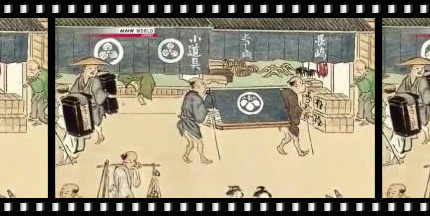
Japanology Plus, Family Crests

Positioning of the mon on the haori/kimono, the middle mon on the back is for men (男) 6cm below and for women (女) 5.5cm below.

Placing of family crest

Obi - 帯
The colored belt which is wrapped around the outer layer of a kimono. The obi doesn't do much to hold up the kimono — it is almost purely ornamental and serves to conceal the bindings that actually hold the whole thing together.
For men there are "Kaku Obi", "Heko Obi" and "Tanzen Obi". There is an easy to wear Pre-tied Kaku Obi also.
"Kaku-obi" is Men's Official "Obi".
This type of pattern is called "Kenjo-gara", which is full of Mystic Buddhist Symbols. "Kenjo" means "Present for Tycoon", which derives from the following: Once upon a time grand lords reigning over "Hakata" used to present this style of fabric to tycoon.

Heko obi - 兵児帯
"obi for men between 15 and 25") is an informal, soft obi, free flowing and made of tie-dyed fabrics, made from silk crape, habutai, cotton, or others. It is tied very informally. The adult's heko obi is as long as a normal obi at 350 centimeters (11.5 ft) to 400 centimeters (13 ft), but relatively wide at up to 74 centimeters (29 in). Adult men wear the heko obi only at home, but young boys can wear it in public, for example at a summer festival with a yukata.

Kaku obi - 角帯
("stiff obi") is another obi used by men. A formal kaku obi is about 10 centimeters (3.9 in) wide and 400 centimeters (13 ft) long and depending on its material, colors and pattern is suited to any and all occasions from everyday wear to a close relatives funeral. A kaku obi typically is made of Hakata ori (and thus a Hakata obi) which has length-wise stripes), or from silk pongee, silk gauze, silk damask. It is worn in the simple kai-no-kuchi knot.
A kaku obi typically is made of hakata ori which has length-wise stripes and woven pattern based on Buddhist symbols and is worn tied in the simple kai-no-kuchi knot.

Tanzen obi - 丹前帯
A flat band to be worn with a yukata at the classic inn (ryokan) and onsen by everyone be it kid or adult or women or men. This is a soft band and also easy to tighten for the beginner.
This obi is around 5-8 cm wide and 240-255cm long.

kinchaku - 巾着
Kinchaku is a traditional Japanese purses or handbags. It is a small bag, typically with a drawstring.
Kin means fabric and Chaku means to put on. This small drawstring bag was invented to carry personal things such as money, one’s seal impression, a lucky charm, medicine, cigarette and cosmetics close to your skin. It also was used to carry Bento (lunch box) and utensils around.
In Edo Era, Kinchaku became a fashion icon in rich people and high-end Kinchaku were made by professional crafters by using leather, imported woolen cloth and silk. It was a primary accessory to carry around. When Meiji Period arrived, the life style gradually became westernized as Sakoku (locked country) policy has ended and foreigners were free to come into Japan and Japanese finally got permission from government to travel to oversea. People were rapidly fascinated with western cultures and the Kinchaku was replaced with other types of bags.
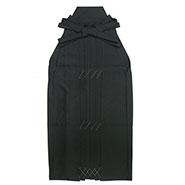
Hakama - 袴
Hakama is a skirt like bottom that you wear over the Kimono. Mostly people wear Hakama for formal events.
Hakama (袴) are a type of traditional Japanese clothing. Hakama cover the lower body and resemble a wide, pleated skirt. Hakama were originally worn only by men, but today they are worn (albeit slightly differently) by both men and women. Hakama are tied at the waist and fall approximately to the ankles.
There are two types of hakama, divided and undivided. The divided type, called umanori (馬乗り, horse-riding hakama) are divided like trousers, but nearer the bottom of the garment. This type of hakama are often called "divided skirts". Both types are identical in outside appearance.
Hakama are worn over a kimono. There are four straps, a long one on either side of the front of the garment, and a short one on either side of the rear. The rear of the garment has a rigid board-like section and a toggle which is tucked into the rear of the obi, and helps to keep the hakama in place.
Hakama were originally worn by samurai, and had the same function as chaps, the leather trouser protectors worn by cowboys in the west, that is, to protect the clothing.
Hakama have seven deep pleats, two on the back and five on the front. The pleats are supposed to represent the virtues considered essential by the samurai. Many martial artists continue this tradition, but different sources give different meaning to these pleats.
Men's hakama
The most formal type of hakama are made of stiff, striped silk, usually black and white, or black and gray. These are worn with black montsuki kimono (kimono with one, three, or five family crests on the back, chest, and shoulders), white tabi (divided-toe socks), white under-kimono and woven straw sandals of various types. In colder weather a montsuki haori (long jacket) with a white haori-himo (haori-fastener) completes the outfit.Hakama can be worn with any type of kimono except yukata (light cotton summer kimono generally worn for relaxing, for sleeping, or at festivals or summer outings). While striped hakama are usually worn with formal kimono, stripes in colors other than black, gray and white may be worn with less formal wear. Solid and gradated colors are also common. A hakama makes any outfit a little more formal.
While hakama used to be a required part of men's wear, nowadays men usually wear hakama only on extremely formal occasions, and at tea ceremonies, weddings, and funerals. Hakama are also regularly worn by practitioners of a variety of martial arts, such as kendo, aikido, kyudo, etc cetera. It is said that the flowing fabric of the hakama can disguise the movements of the warrior giving him an advantage in combat.
Sumo wrestlers, who do not wear hakama in the context of their sport, are, however, required to wear traditional Japanese dress whenever they appear in public. As hakama are one of the most important parts of traditional male formal dress, sumo wrestlers are often seen wearing hakama when attending appropriately formal functions.
There are many ways for men to tie hakama. First, the obi is tied in a special knot (an "under-hakama knot") at the rear; men start with the front section, bringing the ties around the back and crossing them over the top of the knot of the obi. The ties are brought to the front and crossed below the waist, then tied at the back, under the knot of the obi. The toggle is then tucked behind the obi, and the rear ties are brought to the front and tied in a variety of ways. The most formal method results in a knot that resembles two bow-ties in a cross shape.
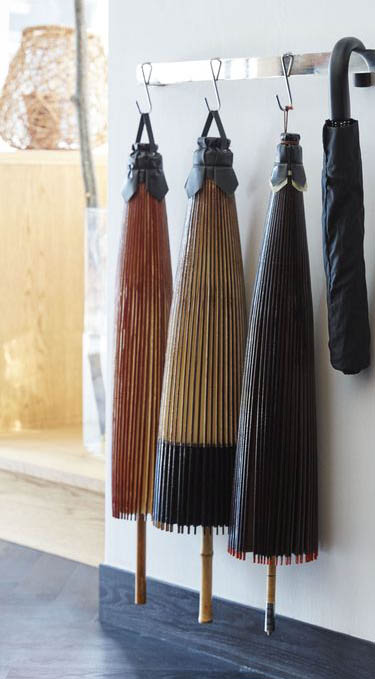
Wagasa - 和傘 or 京和傘
The Japanese authentic oil-paper umbrella. The surface paintings include traditional Japanese culture, gained popularity from the Azuchi–Momoyama period to Edo period.
Read the rest on the Wikipedia page on Oil-paper umbrella

Kasa - 笠 (left image shows a sandogasa / 三度笠)
A kasa is a generic term to identify traditional hats. Japanese traditional hat types are easily recognized because the word kasa (笠) is at the end. There are many kinds of kasa out there like,
Komusougasa, Roningasa, Jingasa, Sandogasa, Amigasa, Fukaamigasa, Sugegasa, Torioigasa, Takuhatsugasa, Yagyūgasa and Ajirogasa.


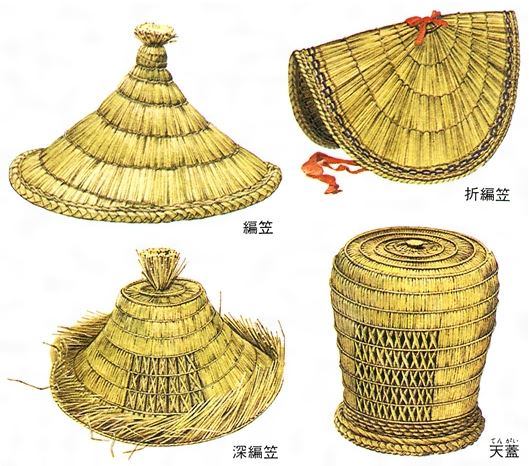
click image to enlarge (images from Kotobank Japan)
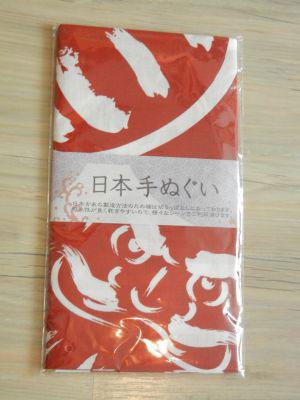
Tenugui - 手ぬぐい
A thin Japanese hand towel made of cotton. It is typically about 35 by 90 centimeters in size, plain woven and is almost always dyed with some pattern.
It can be used for anything a towel could be used for - as a washcloth, dishcloth, but often as a headband, souvenir, decoration, or for wrapping items such as bottles. Towels made from terry cloth have largely replaced it in household use. However tenugui are still popular as souvenirs, decorations, and as a head covering in kendo, where it functions as a sweatband, as extra padding beneath the headgear (men), and to identify the participants by team color.
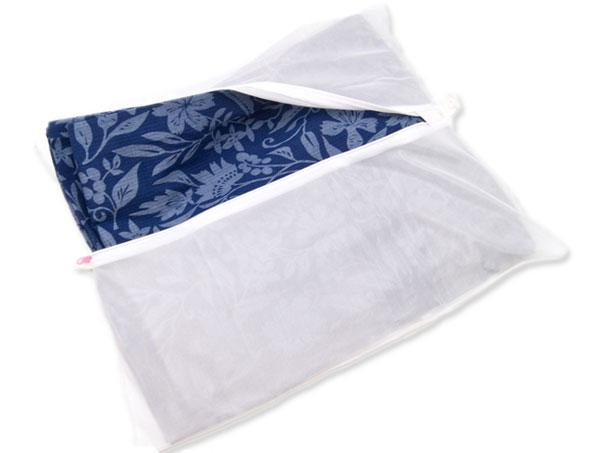
Laundry net - 洗濯ネット
This kimono washing net is made of polyester, comes in different sizes. I have seen them from 42x25cm to 50x43cm.
Preventing friction that could cause damage to the fabric while in a machine washer.

Netsuke - 根付
A netsuke is a form of miniature sculpture which developed in Japan over a period of more than three hundred years. Netsuke served both functional and aesthetic purposes. The kimono, the traditional form of Japanese dress, had no pockets.
Women would tuck small personal items into their sleeves, but men suspended their tobacco pouches, pipes, purses, or writing implements on a silk cord from their obi (kimono sash). These hanging objects are called sagemono. To stop the cord from slipping through the obi, a small toggle was attached. The toggle is called a netsuke. (The most popular pronunciation is "net-ski", while the actual Japanese is closer to "netskeh"). A sliding bead (ojime) was strung on the cord between the netsuke and the sagemono to tighten or loosen the opening of the sagemono.
The original page where this explanation came from can be found at Janel Jacobson's Internet Gallery of Small Sculptures
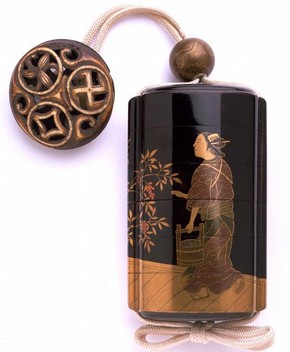
Inrou - 印籠
Inrou, medicine case, seal case or in other words: a case for small things.
As Japanese clothing has no pockets, they needed a place to stash small objects. As the name implies, the inrou was originally intended to store small seals used by Japanese in lieu of signatures. Despite their original intended purpose, inrou ended up being used to store pills or other medicine (which came in small folded paper packets) and herbs. That's why you see often inrou that consist of layered small boxes, to seperate the items from mixing.
Nowaday's they are also very useful for such things as car keys, money, an ID, or even a watch. Some people carry a few emergency cigarettes and a lighter in one.
The original page where this image came from can be found at Victoria and Albert Museum (London)

Emonkake - 衣紋掛け
A retractable coat hanger specifically designed to support the kimono/haori design together with the obi. Retracted the hanger is about 30-35cm but fully extended it becomes over 120-140cm in length, usually enough to make sure the sleeves and neck part are on one line (in other words : maintaining the shape of the kimono)

Tatoushi - 畳紙
Kimono are wrapped in a large piece of washi paper when storing kimono. This paper is called “tatoushi”. It has an excellent ventilation capability and absorbs and releases excess moisture from the kimono. So it is said to prevent kimono from getting moldy. Papers other than washi are poor in ventilation capability and may contain acid, so it is not suitable for wrapping kimono.
Putting the kimono into this flat foldable paper case makes it also much easier to place in the drawers and to sort/pick up the kimono you want to wear.

Sale terminology
When buying a kimono on a Japanese site it will be handy to know these terms :
| 単衣 | hitoe | unlined (単 = one layer 衣=clothes) kimono |
| 袷 | awase | lined kimono (double layer) |
| 紬 | tsumugi | pongee (soft thin cloth woven from raw silk) |
| 正絹 | syouken | pure silk |
| 化繊 | kasen | Synthetic fiber |
| 仮縫い | karimei | temporary sewing (a kimono that has been basted into the final shape but has not actually been sewn.) Can also be written as かりえば |
| メンズ | menzu | men |
| 男性 | dansei | men |
| 紳士 | shinshi | gentleman |
| 着物 | kimono | kimono, also written as きもの or キモノ |
| 売り切れました | urikiremashita | out of stock |
| レビュー | review | reviews |
| 比較 | hikaku | compare |
| 送料無料 | souryoumuryou | free shipping |

Sale terminology: Kimono size terminology
| 身丈 | mitake | length (of clothing women) |
| 着丈 | kitake | length (of clothing men) |
| 裄 | yuki | distance from the seam in the back of a kimono to the end of the sleeve |
| 袖 | sode | sleeve |
| 袖下 / 袖丈 | sode shita / sode take | height of the sleeve (of traditional Japanese clothing) |
| 袖山 | sode yama | top crease of a sleeve (of traditional Japanese clothing) |
| 肩幅 / 肩巾 | kata haba | shoulder width (breadth) |
| 袖幅 / 袖巾 | sode haba | sleeve width |
| 前幅 / 前巾 | mae haba | front width |
| 後幅 / 後巾 | ato haba | back width |
| 目安身長 | meyasu shinchou | (your) height |
